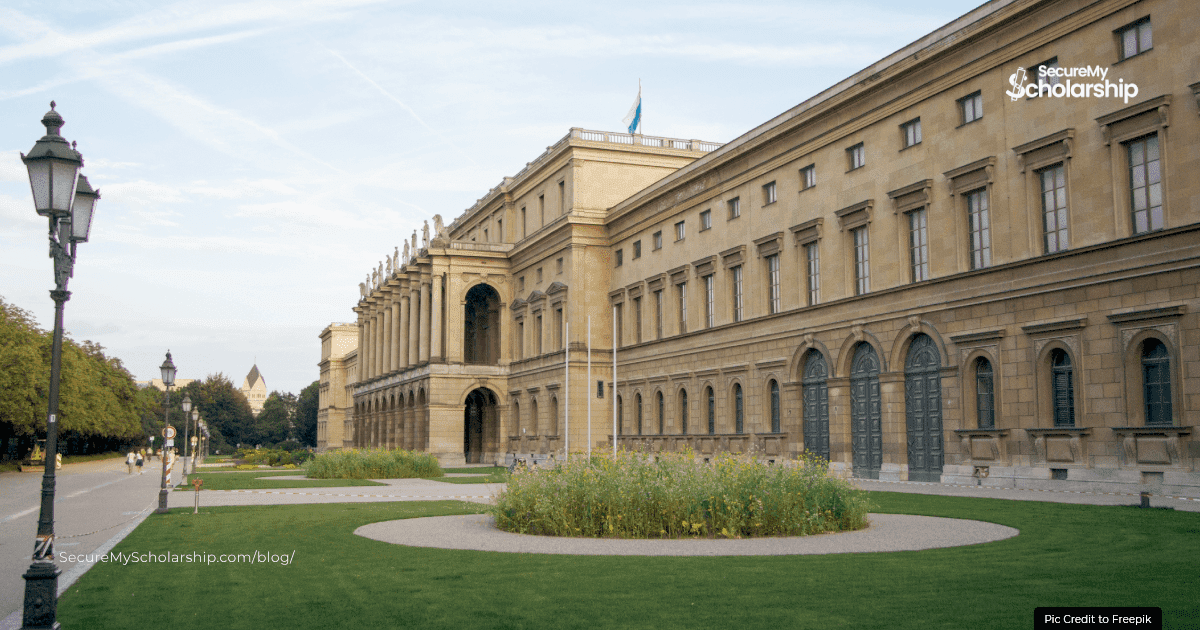It10 Oldest Universities in the World – Higher education institutions have existed for hundreds of years and, in some cases, millennia, but not all have stood the test of time. Many of the oldest universities in the world have disbanded, split into independent colleges, or undergone radical modernization over the ages. The historical legacies of the historic institutions that still exist today are noteworthy, as is their demonstration of adaptability to contemporary environments and relevance in a globalized world despite fierce competition. Some of the world’s oldest universities are discussed below, all of which are listed in a QS rating. Most are in Europe because this continent has a high concentration of venerable and esteemed colleges. Let’s look at the list of 10 Oldest Universities in the World, their specialty, and other amazing facts.

10 Oldest Universities in the World
University of Toulouse
Location: France’s Toulouse
Founded in the year 1229
The University of Toulouse was among the first academic establishments in Europe. Though Toulouse is a sizable, contemporary city renowned for its history, art, and culture, it has a village-like atmosphere. The University of Toulouse has not existed as a single institution since it closed in 1793 due to the French Revolution. Université fédérale de Toulouse Midi-Pyrénées (UFTMP) is an organisation of universities and higher education institutions. However, other autonomous “successor” universities have taken up the name.
The Treaty of Paris led to the establishment of the school, which taught theology, in 1229. Law and medicine were later added to the curriculum. In 2007, the current University of Toulouse was established after it was divided into three distinct universities in 1969. The National Polytechnic Institute of Toulouse and Toulouse Business School are among the institutions under UFTMP that are connected to the University of Toulouse. However, it no longer functions as a single university. A total of 100,674 students have enrolled at these historic universities.
Notable Alum:
Thomas Pesquet, the final astronaut from the 2009 class of the European Orbit Agency to reach orbit and the youngest member of the European Astronaut Corps
Nobel laureates:
Jean Tirole, who in 2014 received the Nobel Memorial Prize in Economic Sciences for his research on market power and regulation.
Fun Fact:
International students studying in Toulouse are in for a treat because the city is renowned for its cuisine. Students can savor preserved duck and cookies in their own fat and the hearty stew of pork and beans, cassoulet, at this traditional French country restaurant.
University of Naples Federico II
Location: Italy’s Naples
Founded in the year 1224
The Naples University Nestled between Mount Vesuvius, the still-erupting volcano that created Pompeii, and the Bay of Naples, Federico II is a public, nonreligious university financed by the state. The Division of Science and Technology, the Division of Life Sciences, and the Division of Social and Human Sciences are the three semi-independent divisions that house the institution’s thirteen faculties. These charge 13 schools’ worth of research and instruction throughout 82 departments.
In 1224, Frederick II, the Holy Roman Emperor and King of Sicily, decided to build an academy free from solid papal influence.
In 1987, the organization changed its name to Frederico II in honor of its founder. Since its creation, it has been steadily operating in Naples to support the cultural growth of bright young researchers and students and prevent needless, costly journeys overseas. There are a total 78,324 students (44,700 undergraduates and 33,600 postgraduates)
Motto: For the propagation of knowledge and the inculcation of the sciences, Ad Scientiarum Haustum et Seminarium Doctrinarum (Latin).
Notable Alums:
Samantha Cristoforetti, the first Italian woman in space and the first person to brew espresso coffee in space; three Italian presidents
Interesting Fact:
Queen Margherita Teresa Giovanni’s 1889 visit to Naples inspired the name of the pizza Margherita. The colors of the Italian flag are represented on the pizza: tomato sauce is red, cheese is white, and basil is green. Students are welcome to partake in a slice from Antica Pizzeria Port’Alba, the world’s first pizzeria that initially opened its doors in Naples in 1830.
University of Oxford
Location: Oxford, England
Founded in the year 1096
The University of Oxford quickly springs to mind when people consider esteemed universities in the United Kingdom due to its long history and ingrained traditions. Being the oldest university in the UK, it trains gifted students from both the local and global communities. Formally known as The Chancellor Masters and Scholars of the University of Oxford, the university is spread out across the downtown area and consists of several buildings and services. Oxford University is a private institution of higher learning consisting of 38 constituent colleges and a comprehensive academic program divided into four divisions. All students must be members of a membership organization besides the University of Oxford.
Although the exact founding date has yet to be discovered, Oxford’s teaching history dates back to 1096. As English students from the University of Paris returned to Oxford, the student body increased, and in 1231, the teaching body was officially recognized as a university or corporation. In 1248, Oxford was bestowed with a royal charter by King Henry III. The two historic English universities, Oxford and Cambridge, are collectively known as Oxbridge and are well-known worldwide. Oxford started admitting female students in 1920.
23,195 students (11,728 undergraduates and 10,941 postgraduates)
Motto: “The Lord is my Light,” or “Dominus Illuminatio Mea” in Latin.
Renowned Alums:
Hugh Grant, Oscar Wilde, Hugh Grant, Amal Clooney, Albert Einstein, Adam Smith, Margaret Thatcher, J.R.R. Tolkien, Bill Clinton, Oscar Wilde, and Stephen Hawkings.
Nobel Laureates:
Aung San Suu Kyi, a politician from Burma who leads the National League for Democracy, a role similar to the prime minister; Erwin Schroedinger, an Austrian physicist famous for his “Schrödinger’s cat” thought experiment; and Malala Yousafzai, a Pakistani activist for female education and the youngest Nobel laureate
Interesting fact: Oxford is where the word “snob” first appeared. Originally, it was a shortened version of the Latin term “sine nobilitate,” meaning “without nobility.”
University of Cambridge
Location: Cambridge, United Kingdom
Founded in the year 1209
The University of Cambridge is primarily a public research university whose history and influence have made it one of the most prestigious universities in the world. You’ll see the university’s police force in their traditional cloak and hat uniform and students wearing gowns with dark suits and white shirts or blouses. It is home to Cambridge University Press, the second-biggest university press in the world and the oldest publishing firm in the world. In addition to running several scientific and cultural museums, the university gives its students access to some 15 million volumes.
When groups of scholars gathered in Cambridge in 1209 for academic purposes, the Bishop of Ely established Peterhouse, the city’s first college. The university was founded and has since created 31 constituent colleges with over 100 academic departments divided into six schools. There are more than 100 libraries at Cambridge University. Women were not regarded as full members of the university until 1948.
19,955 students total—12,340 undergraduates and 7,610 postgraduates.
Motto: Hinclucemet poculasacra (Latin), whereby we obtain rich information and enlightenment
Notable Alums:
HRH Charles, Prince of Wales; Charles Darwin; Stephen Hawking, theoretical physicist and cosmologist, who was the first to lay out a theory of cosmology explained by a combination of the general theory of relativity and quantum mechanics;
116 Cambridge graduates have won Nobel prizes, including Maurice Wilkins for deciphering the structure of DNA, James Watson for his work on in vitro fertilization, and Robert G. Edwards for his creation of in vitro fertilization.
Fun Fact:
Climbing onto college buildings at night is a popular but frowned-upon pastime among Cambridge students.
University of Bologna
Location: Italy’s Bologna
Founded in the year 1088
The oldest continuously running institution in the Western world is the Institution of Bologna (UNIBO), a public university. Comprising eleven schools, it was the first academic institution to use the name “universitas” to refer to student and master corporations. This term came to characterize the Bologna-based organization.
The university’s beginnings can be linked to groups of international students known as “nations,” who employed academics from the city to assist them. After growing into a universitas, they created a broader association. UNIBO played a significant role in the formation of medieval Roman law and is renowned for its instruction in canon and civil law.
Formerly, the university solely awarded doctorates; however, today, any of the 11 schools that make up the institution offer bachelor’s and master’s degrees.
82,363 students (52,787 undergraduates and 29,576 postgraduates)
Motto: Pater legum Petrus unique In Latin, Bononia mater; Bologna is the mother of the law, while St. Peter is the father of the law everywhere.
Famous Alum:
Enzo Ferrari, the creator of Scuderia Ferrari
Fun Fact:
Climbing to the top of one of the two iconic towers in the area, Torre Degli Asinelli, and crossing the centre of Piazza Maggiore are two superstitions followed by students that, if broken, would prevent them from graduating.
Al-Azhar University
Location: Egypt’s Cairo
Founded in the year 970AD
This is one of the oldest universities in the world. Also Known as “Sunni Islam’s most prestigious university,” Al-Azhar University is the oldest degree-granting institution in Egypt. The organization oversees a nationwide network of schools that educates about two million people. Its primary goals are to spread Islam and Islamic culture and to provide proselytising training to preachers appointed by the Egyptian government. Only the Egyptian National Library and Archives is regarded as being more significant than this library in Egypt.
The institution was established as a hub for Islamic education, and in addition to logic, grammar, and rhetoric, students studied the Qur’an and Islamic law. For a large portion of its early history, Al-Azhar’s educational structure could have been more structured; there were no regular entrance standards, curricula, or degrees at first. Some faculties were added during the early 1960s reforms, such as the engineering and medical faculties.
Notable Alumni include Saad Zaghlul, the leader of the 1919 revolution in Egypt, Ahmad Meshari Al-Adwani, the poet and professional essay writer of Kuwait’s national song Al-Nasheed Al-Watani, and Muhammad Ma Jian, the translator of the Qur’an into Chinese.
University of Salamanca
Location: Salamanca, Spain
Founded in the year 1134
The University of Salamanca is a public university and a prominent hub for humanities research. It is especially well-known for its language programs and legal and economics courses.
The institution and its affiliated research centres conduct scientific studies. These centres include the Ultrashort Ultraintense Pulse Lasers Center, the Institute of Neuroscience of Castile and Leon, and the Cancer Research Center.
The university was established in 1134. It received its royal charter from King Alfonso IX in 1218. However, the institute was originally founded in 1130 as a cathedral school. Several colleges were created as nonprofit organizations to help underprivileged students attend university. By the 18th century, these colleges had become closed businesses run by the founders’ families. Napoleon’s army later destroyed or repurposed these institutions into academic buildings that are still in use today.
There are 28,000 students total (25,760 undergraduates and 2,240 postgraduates).
Motto: Salamanca teaches the fundamentals of all sciences. Omnium scientiarum princeps Salmantica docet
Notable Alum:
Panamanian President Aristides Royo
Interesting Fact:
The town has its own resident astronaut; an engraved cosmonaut with gargoyle companions can be seen on the façade of the 16th-century church. Nobody is certain of the astronaut’s origins. However, it’s said to result from naughty stonemasons who left their mark during recent renovations.
University of Paris
Location: France’s, Paris
Founded in the year 1160
Since the Middle Ages, people have widely recognized the University of Paris for its academic achievements in the humanities, particularly in philosophy and theology. In 1970, officials split it into 13 independent universities, which were later reorganized into other university groups and institutions. As a result, the Sorbonne in Paris is home to various university groups.
The organization began as a corporation connected to Notre Dame de Paris Cathedral School in 1150. The French Revolution shut it down, but the University of France later reopened with four separate faculties: the Faculty of Science, the Faculty of Medicine, the Faculty of Humanities (Faculté des Lettres), the Faculty of Law (which later included Economics), and the Faculty of Theology, which closed in 1885.
Notable Alums:
Voltaire, writer and philosopher best known for promoting freedom of speech, freedom of religion, and separation of church and state; two Popes; Playwright and writer Honoré de Balzac is recognized as one of the pioneers of realism in European literature.
49 people have won the Nobel Prize in physics, chemistry, or biology. Marie Curie and Pierre Curie are among them. They are credited with developing the theory of radioactivity, which Marie coined, as well as developing methods for isolating radioactive isotopes and discovering the metals polonium and radium.
Interesting Fact:
Curie conducted much of her research in laboratories near the École normale supérieure (ENS) in the Latin Quarter of Paris. Curious students may visit the historical site without worrying about exposure to radioactive materials.
University of Padua
Location: Padua, Italy
Founded in the year 1222
The University of Padua is a public university in a city renowned for its murals, lovely arcaded avenues, and hip cafés that draw students from all over the city. Today, the institute contributes to academic and scientific research on a global and European scale. It also oversees nine museums, one of which is devoted to the history of physics.
The university was one of the most well-known in early modern Europe. It was established in 1222 as a school of law and medicine. Law and theology were the first disciplines taught. However, the curriculum quickly expanded. By 1399, it had split into two universities: one for civil and canon law, and the other for dialectic, philosophy, astronomy, grammar, medicine, and rhetoric. In 1873, it became a university of the Kingdom of Italy. Since then, it has gained recognition as one of the most esteemed institutions in the nation for its contributions to scholarly and scientific research.
59,317 students (38,495 undergraduates and 20,822 postgraduates)
Motto: Liberty of Padua, universally and for all (Universa Universis Patavina Libertas, in Latin).
Former Student Notable:
Nicolaus Copernicus, the astronomer, determined that the Sun was at the centre of the solar system.
Fun Fact:
Since 1595, Padua’s renowned anatomical theatre has drawn scientists and artists studying the human body during public dissections. It is the oldest continuously operating permanent anatomical theatre in Europe, and guided tours are available for interested students and tourists.
University of Al Quaraouiyine
Location: Fez, Morocco
Founded in the year 859 AD
UNESCO and Guinness World Records recognized the University of Al Quaraouiyine as the world’s first degree-awarding institution. It is also the oldest continuously running university. In 1963, it became part of the Moroccan public university system. The curriculum focuses on Islamic religious and legal studies, with an emphasis on Classical Arabic grammar, linguistics, and Maliki law. Students sit in a semicircle around a sheikh. The sheikh guides them through reading passages, poses questions, and clarifies difficult concepts. Both men and women are welcome to enroll.
Fatima al-Fihri, the daughter of a wealthy merchant, founded the university. She established it along with a madrasa, a type of religious school or college focused on studying Islam.
The university remains one of the most important spiritual and educational centers of the historical Muslim world. It still operates today. The main subjects of study are Islamic legal and theological sciences, with a focus on Maliki law and Classical Arabic grammar.
Although Fatima al-Fihri, a female refugee, founded the institution, it started admitting women students only from 1940.
The age range of students at the University of Karueein is 13 to 30. Some are pursuing high school diplomas, while others are pursuing bachelor’s degrees at the university level.
This not only makes it a city that encourages its students to pursue higher education, but it also draws tens of thousands of tourists each who come to experience the city’s rich cultural offerings, including its cuisine, artwork, museums, and medieval past. The university has around 8,120 number of pupils.
Notable Alums:
The philosopher Averroes, the geographer Muhammad al-Idrisi, and the Jewish philosopher Maimonides.
Fun Fact:
Al Quaraouiyine is not just the oldest university in the world but one of the oldest universities founded by a woman.
University of Siena
Location: Italy
Founded in the year 1240
The University of Siena, one of the oldest universities in the world and has a solid reputation, is situated in the small Tuscan city of Siena. It now ranks between 651–700 worldwide (down from 601–700 in 2020).
Nearly half of the city’s population resides on the University of Siena campus, which has enrollments exceeding 20,000. Over 163,000 tourists visit the city centre each year, which is also historically significant and is a UNESCO World Heritage Site. Visitors come for the food, art, museums, and medieval legacy.
University of Coimbra
Location: Portugal
Founded in the year 1290
The University of Coimbra ranks 431st in the world and was first founded in the Portuguese capital in 1290. Still, it had to move several times due to obstinate monarchs before settling in Coimbra, the third-largest city in the nation with a rich history dating back to the Roman era.
The institution of Coimbra, which has a student body of little over 24,000, has undergone numerous drastic modifications. It was Portugal’s sole institution in operation for many years throughout the 18th century.
UNESCO recognized the University of Coimbra for its historic structures, open courtyard, cultural customs, and breathtaking city vistas when it inducted the university into the World Heritage List in 2013
Willing to Study at any of the oldest universities in the world?
We have shared the list of the 12 oldest universities in the world with important aspects along with them. With the advent of technology, education has become far more advanced. Nowadays, students prefer to go to high quality modern universities, and some of the oldest universities in the world have become better with great infrastructure and advanced education systems.
Do you want to know more about Study Abroad?
Then, at SecureMyScholarship, you can get every solution for your study abroad query. We focus on making education affordable and accessible to everyone. Contact us today and get your admission to your dream university.




